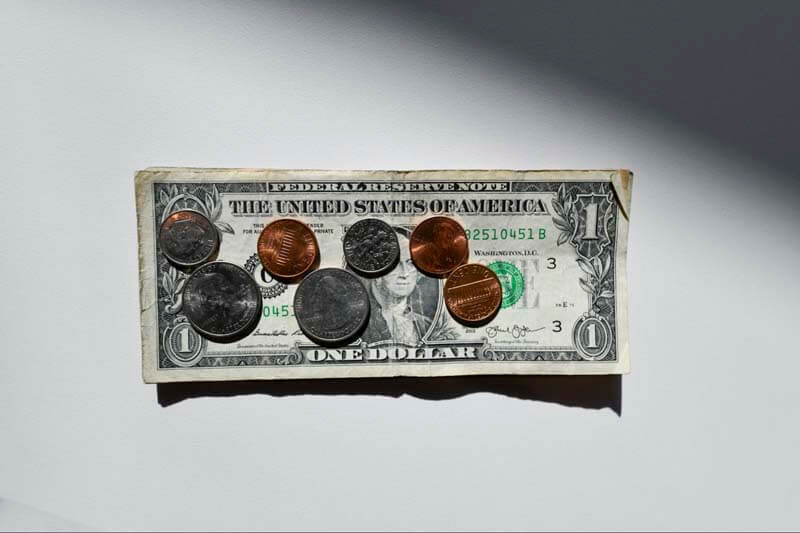Understanding the Difference Between Service Charges and Tips

August 11, 2022

Service industry employees like bartenders, wait staff, food runners, and bussers are the backbone of the service industry and your business. Your servers work hard every day to bring customers’ food and drinks to the right table (not to mention ensuring special birthday dinners go off without a hitch). And your bartenders work tirelessly to keep the drinks flowing for your patrons.
When it comes to taking care of your bartenders and servers, there are specific laws under the Fair Labor Standards Act (FLSA) and the Internal Revenue Code that employers in the hospitality industry must follow. Accordingly, the Internal Revenue Service (IRS) provides a Fact Sheet to help business owners understand the differences between tips and service charges, especially for tax reporting purposes.
In this article, we’ll use that Fact Sheet to help navigate the tricky territory between tips and service charges while showing you how to stay in compliance with reporting each to the IRS.
What We’ll Cover in This Piece:
What Is a Service Charge?

A service charge is a fee collected to pay for services related to the primary product or service being purchased. Many industries like restaurants, banking, and tourism collect service charges. These charges may cover services rendered to the consumer such as processing or administrative costs.
Service charges are paid directly to the company, unlike tips, which are paid to the employee who renders the service.
The Internal Revenue Service states that a service charge includes:
- Large dining parties’ automatic gratuities
- Banquet event fee
- Bottle service charge
How to Report Service Charges to the IRS

According to the IRS Fact Sheet on tips versus service charges (Fact Sheet 2017-8, 4/25/2017), service charges are generally “reported as non-tip wages paid to the employee. With service charges, some employers keep a portion with only the amounts distributed to employees considered as non-tip wages to those employees.”
If you do end up distributing a service charge to your employees, you should “treat them the same as regular wages for tax withholding and filing requirements, as provided in Publication 15, Employer’s Tax Guide,” according to the IRS Fact Sheet 2017-8, 4/25/2017.
The IRS states that “distributed service charges must be included in Box 1 (Wages, tips, other compensation), Box 3 (Social Security wages), and Box 5 (Medicare wages and tips) of the employee’s Form W-2,” per the IRS Fact Sheet 2017-8, 4/25/2017.
What Is a Tip?

The IRS defines tips as “discretionary (optional or extra) payments determined by a customer that employees receive from customers.” In America in particular, customers often leave a customary tip to recognize services rendered by the bartender or server.
According to a study by the major credit card company Discover, the average tip Americans leave for perfect service is twenty percent. However, that number can fall as low as six percent for bad service.
The Internal Revenue Service states that a tip includes:
- Cash tips received directly from customers
- Tips from customers via credit/debit card
- Tips received from other employees paid out through tip pools or tip splitting
As a business owner, you can give that standard fifteen- to twenty-percent tip directly to your waitstaff or give a cut to everyone in the back of the house, including workers, bartenders, bussers, and runners.
The Difference Between Directly and Indirectly Tipped Employees
Employee tips are considered taxable income by the IRS. For tips, it’s the employee’s responsibility to report cash tip income to their employer on a monthly basis (unless they total less than $20). There are two kinds of tipped employees:
- Directly Tipped Employee: One who receives tips directly from customers whether they keep those for themselves or add them to a tip pool (waitstaff, bartenders, etc.).
- Indirectly Tipped Employee: One who does not receive tips directly from customers. (bussers, service bartenders, or chefs).
Both directly and indirectly tipped employees must report tips to their employer.
How to Report Tips to the IRS

Employees must report all cash tips to their employer—except for the tips from any month that total less than $20.
According to the IRS, there are two types of tips to be aware of:
- Cash Tips: tips received from customers, charged tips (for example, credit and debit card charges) distributed to the employee by his or her employer, and tips received from other employees under any tip-sharing arrangement (i.e. tip pools).
- Non-Cash Tips: tips received by an employee in any other medium than cash (such as passes, tickets, or other goods or commodities) from customers are not reported to the employer.
All cash tips and non-cash tips should be included in an employee’s gross income and subject to federal income taxes.
Tip Credits
The Fair Labor Standards Act requires that restaurant employees earn minimum wage or higher. The tip credit allows restaurants to satisfy a portion of the minimum wage obligation through tips. No tipped employee ever makes less than the required minimum wage.
According to the National Restaurant Association, seven states prohibit tip credit under state law: Alaska, California, Minnesota, Montana, Nevada, Oregon, and Washington.
The Main Difference Between Service Charges and Tips
To bring it all home, here are the main differences between service charges and tips.
Service charges are amounts a restaurant, bar, or brewery requires a customer to pay. On the other hand, tips are technically extra or optional, according to the IRS. With tips, it’s up to the customer to decide if and how much they want to add on to their bill as an additional payment to their server or bartender.
Additionally, while the company directly collects service charges, tips go directly to the employee.
The More You Know
As a business owner, you can never be too knowledgeable. Understanding service and tipping charges will help you successfully manage your business and your staff’s expectations.
Now that you are an expert on service and tipping charges, how about one more tip?
There are other fees worth understanding when it comes to building your profitable business. If you own a restaurant, check out Our Guide To Corkage Fees. Understanding this convenience charge will help you when creating your menu and promotions!
Looking for More Ways to Bring Business to Your Restaurant or Bar?
Untappd for Business can help increase your revenue while providing powerful insight and analytics about what your guests are drinking locally.
Get started by scheduling a demo with one of our experts or start a free 7 day trial - no credit card required!
